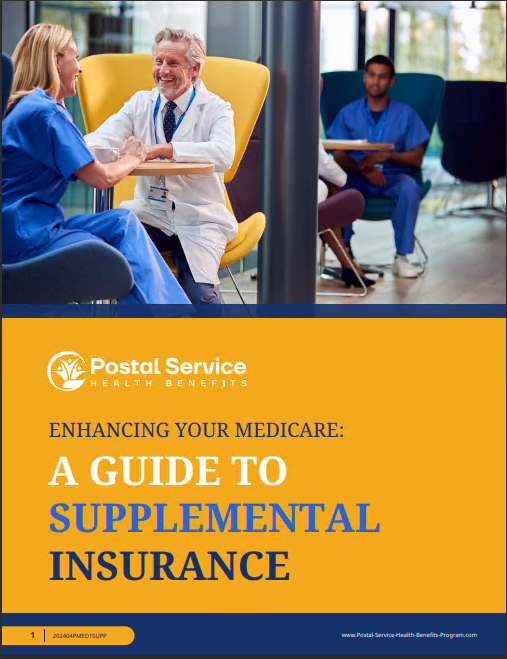Key Takeaways
-
Understanding your options during Open Season can help you choose the best Postal Service Health Benefits (PSHB) plan for your needs.
-
Medicare integration plays a significant role in PSHB coverage, especially for eligible annuitants.
What Is PSHB and Why Does It Matter?
The Postal Service Health Benefits (PSHB) Program is the talk of the town for every USPS employee and retiree. As of January 1, 2025, PSHB officially replaced the Federal Employees Health Benefits (FEHB) system for postal workers, offering tailored health coverage options. Whether you’re a current employee, annuitant, or family member, the choices you make during Open Season directly impact your healthcare coverage and costs.
If you’ve ever felt overwhelmed by the sheer number of health plan options, you’re not alone. PSHB streamlines the process by providing plans specifically designed for postal workers, but that doesn’t mean you should skip the fine print. By exploring your options and understanding the program’s features, you can make an informed decision that aligns with your healthcare needs and budget.
Who Needs to Take Action?
Not everyone needs to make changes during Open Season, but understanding who does can save you from future headaches:
-
Current USPS Employees: You’re automatically transitioned to a corresponding PSHB plan, but reviewing your options ensures you’re not missing out on better benefits.
-
Postal Retirees and Annuitants: Medicare-eligible retirees must enroll in Medicare Part B to maintain PSHB coverage unless they qualify for specific exemptions.
-
Eligible Family Members: Spouses and dependents covered under PSHB should confirm their eligibility and ensure continued coverage.
If you’re happy with your current plan, you might not feel the need to take action. However, reviewing your options during Open Season is always a good idea, especially if your healthcare needs have changed.
Key Features of PSHB Plans
PSHB plans come with several features that make them distinct from other health insurance options. Here’s what stands out:
1. Comprehensive Coverage
PSHB plans include medical, dental, and vision benefits tailored to the needs of postal workers. This all-in-one approach simplifies your healthcare experience.
2. Medicare Part B Integration
If you’re Medicare-eligible, PSHB plans often coordinate with Medicare Part B to reduce out-of-pocket costs. Some plans even offer Part B premium reimbursements and waive deductibles, making it an attractive option for retirees.
3. Prescription Drug Coverage
PSHB automatically includes a Medicare Part D Employer Group Waiver Plan (EGWP) for Medicare-eligible enrollees. This provides enhanced prescription drug benefits while capping out-of-pocket costs.
4. Flexible Enrollment Options
While Open Season is the primary time for enrollment changes, certain life events—like marriage, divorce, or the birth of a child—qualify you for a Special Enrollment Period (SEP).
Open Season Deadlines: Don’t Miss Out
Open Season typically runs from early November to mid-December, giving you a limited window to make changes. For the 2025 plan year, Open Season concluded on December 13, 2024. Any updates you made during this period take effect on January 1, 2025.
If you missed Open Season, you might still qualify for changes due to a qualifying life event. However, this is not guaranteed, so it’s crucial to review your options annually during the designated period.
Tips for Selecting the Right Plan
Choosing the right PSHB plan requires some legwork. Follow these tips to ensure you’re making the best choice:
1. Assess Your Healthcare Needs
Think about your medical history and anticipated healthcare needs for the upcoming year. Do you expect frequent doctor visits or prescription refills? If so, prioritize plans with lower out-of-pocket costs.
2. Review Medicare Integration Benefits
For Medicare-eligible enrollees, understanding how PSHB coordinates with Medicare is critical. Plans that offer Part B premium reimbursements or waive certain costs can save you significant money.
3. Check Provider Networks
Ensure your preferred doctors, specialists, and hospitals are in-network. Out-of-network care can quickly drive up your expenses.
4. Compare Plan Costs
While premiums are essential, don’t overlook other costs like deductibles, copayments, and coinsurance. Calculate your total potential expenses to get a clearer picture.
5. Utilize Available Resources
USPS provides plan comparison tools and detailed brochures to help you navigate your options. Take advantage of these resources to make an informed choice.
Why Medicare Matters for PSHB Enrollees
For Medicare-eligible retirees, PSHB plans are designed to work seamlessly with Medicare Parts A and B. This integration often results in:
-
Lower Out-of-Pocket Costs: Medicare covers most primary care and specialist visits, while PSHB plans handle additional benefits like prescription drugs.
-
Part D Prescription Coverage: With EGWP automatically included, you gain access to a robust prescription drug plan.
-
Cost Sharing Reduction: Many PSHB plans waive deductibles and copayments for enrollees with Medicare, creating a more affordable healthcare experience.
It’s important to note that enrolling in Medicare Part B is mandatory for most PSHB plans unless you qualify for specific exemptions. If you’re unsure about your requirements, consult USPS resources or contact a benefits specialist.
Common Questions About PSHB
1. What happens if I don’t enroll in Medicare Part B?
If you’re Medicare-eligible and choose not to enroll in Part B, you may lose access to your PSHB plan or face significantly higher out-of-pocket costs. Exceptions apply to certain retirees based on their service dates.
2. Can I keep my current doctors?
Most PSHB plans include extensive provider networks, but it’s always wise to confirm that your preferred healthcare providers are in-network before enrolling.
3. What if I have coverage through my spouse’s FEHB plan?
You can continue coverage under a family member’s FEHB plan, but you’re not required to enroll in a PSHB plan. However, transitioning to PSHB may offer benefits more aligned with your needs as a postal worker.
Looking Ahead: How PSHB Impacts Your Future
The introduction of PSHB represents a shift in how postal workers access and manage healthcare. By tailoring plans to the unique needs of USPS employees and retirees, PSHB aims to simplify choices and enhance benefits. However, this new system also requires proactive decision-making during Open Season to maximize your benefits.
For annuitants, Medicare integration remains a cornerstone of PSHB coverage. Ensuring you meet enrollment requirements and understanding your plan’s features can significantly impact your financial and healthcare outcomes.
Make the Most of PSHB Open Season
Open Season is your opportunity to take control of your healthcare. By reviewing your options, understanding the features of PSHB plans, and acting within the enrollment period, you can secure a plan that meets your needs without unexpected surprises. Remember, the decisions you make today shape your coverage for the entire year.






